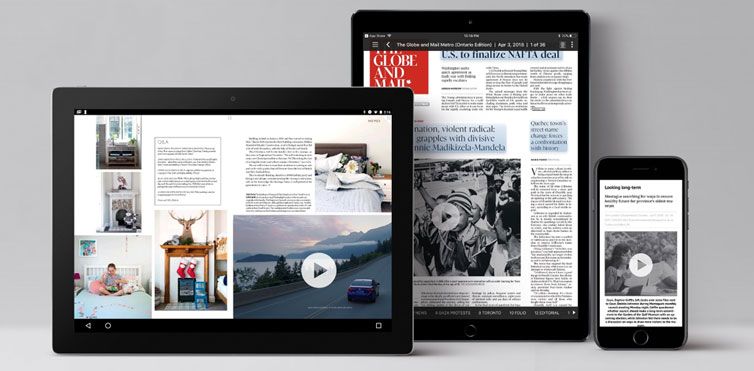
‘Your company has made a 400-million-dollar acquisition’ screams a link in a mail marked to all employees. You yawn and click ‘Back to inbox’. The next day, you see a bright image of your CEO proclaiming “It’s a fantastic acquisition!” from a neat cover of a brightly-packaged digital magazine. You swipe to open the magazine on your smartphone.
There is something about gadgets which encourages us to read. No wonder then that the amount of content consumed over smartphones is rapidly increasing. In 2015, a survey revealed that smartphones and tablets accounted for 62 per cent of the active time spent on digital media. Mobile apps alone witnessed the most time spent on digital media, at 54 per cent. The phenomenon has now been pushed to the next level by the global Covid-19 outbreak.
The pandemic and the resultant lockdowns have ensured that more people than ever before are operating remotely. The need to communicate has increased, leading to a surfeit of mails, messages, etc. It has led to communication fatigue, rendering these one-to-one communication channels ineffective, at times. Also, these channels are limited in their reach — restricted to the close circle of contacts.
Digital magazines provide the best option to make your communication reach people across geographies.

What exactly is a digital magazine?
A digital magazine is content published over the internet such that readers can access them on their gadgets — laptops, mobiles, tablets, etc. Content is published in a device-optimised manner, allowing readers to ‘flip’ through the magazine by swiping the screen or clicking the right arrows on their keyboard. When loaded onto mobile apps, the magazine can enable readers to experience interactive and rich multimedia content, including video galleries, social media feeds, interactive links, etc.
Digital magazines are convenient to explore and allow readers to access a broad spectrum of content type, such as videos, blogs, polls, multimedia, etc. With search-engine customisation, they can be enabled to reach the relevant and appropriate audience. They are also shareable and can potentially reach an exponential number of readers.
It is the best way to communicate with your employees spread across different time-zones as it ensures that they receive uniform communication about the developments in the organisation.
There are two basic formats through which content can be published online.
Digital replica
Here, pdf files are loaded onto a flip-able reader to fit user devices. The experience replicates the feel of the printed version, online. Readers flip through pages like they do with the print version. Besides, you can embed multimedia content, including audio, video, image files, HTML and links, for an enhanced interactive experience. Easier and cheaper to create, replicas can be created and published quickly.
Reflowed content

Reflow magazines publish content redesigned with a more gadget-friendly layout. Usually created using InDesign software, the content is arranged around related content, including images, videos, etc. They are generally used to create a digital version of a printed publication. The fonts are kept similar to the one in the print version. Readers move from their left to right to view articles and up and down to read them fully.
Whichever format you choose, your communication will attract more eyeballs through a digital magazine. For more on the immense possibilities, contact us.





